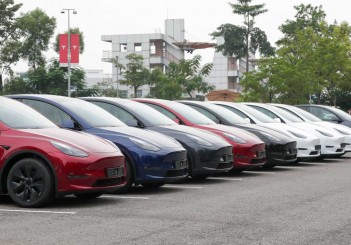The Toyota Concept-i is the type of driverless car that will need to communicate with others.
TOKYO: A big part of vehicles becoming truly driverless is them eventually having the capability to communicate with other vehicles in the vicinity and various elements of infrastructure. Toyota is therefore looking to start selling models in 2021 that can talk to each other using short-range wireless technology, which could potentially prevent thousands of accidents each year.
The Japanese auto giant is looking to get a lead over its rivals by getting its own version of the technology accepted first to give it the very best chance of becoming the standard used by everyone. After all, at some point all the vehicles on the road will have to communicate with each other and that means the need for a recognized industry standard.
At the moment, the US transportation department is considering whether to adopt a pending proposal that would eventually require all vehicles to be fitted with this advanced technology.
Toyota is hoping to adopt this short-range communication system across most of its US new vehicle portfolio by the mid-2020s and that other manufacturers will then do the same.

Back in December 2016, the Obama administration came up with a proposal where all automakers would be required to adopt such a technology, and it was suggested they be given a period of at least four years to comply. The detail of the proposal insisted all vehicles "speak the same language through a standard technology."
A specific bandwidth was previously allocated to automakers for such a technology, which was then referred to as "vehicle-to-vehicle" (V2V) and "vehicle to infrastructure" (V2I) communications. Studies have gone on for more than a decade now, but the 5.9 GHz bandwidth has gone largely unused and some in Congress now think it should be allocated for other uses.
General Motors started offering such a technology in its Cadillac CTS models last year, but it's still the only commercially available vehicle at the moment to have such a system. However, Toyota has now deployed its own technology in more than 100,000 vehicles in its native Japan since 2015.
Last year, major automakers, state regulators and others urged the US Transportation Secretary to finalize standards for the technology and therefore protect the reserved spectrum, stressing the need to expand deployment and use of the traffic safety technology. Toyota will be hoping that standard is eventually the one it already operates and that other markets will then follow suit.










